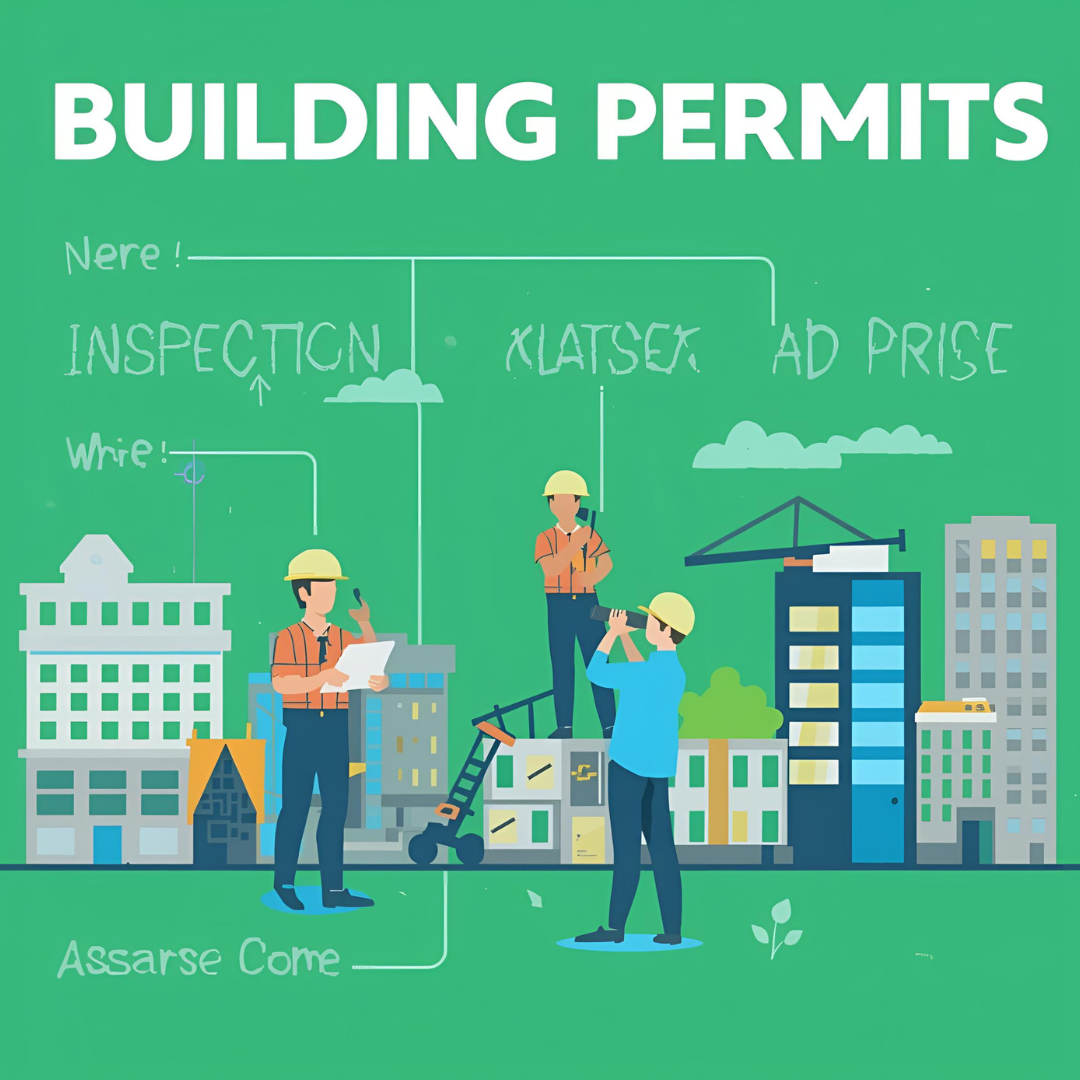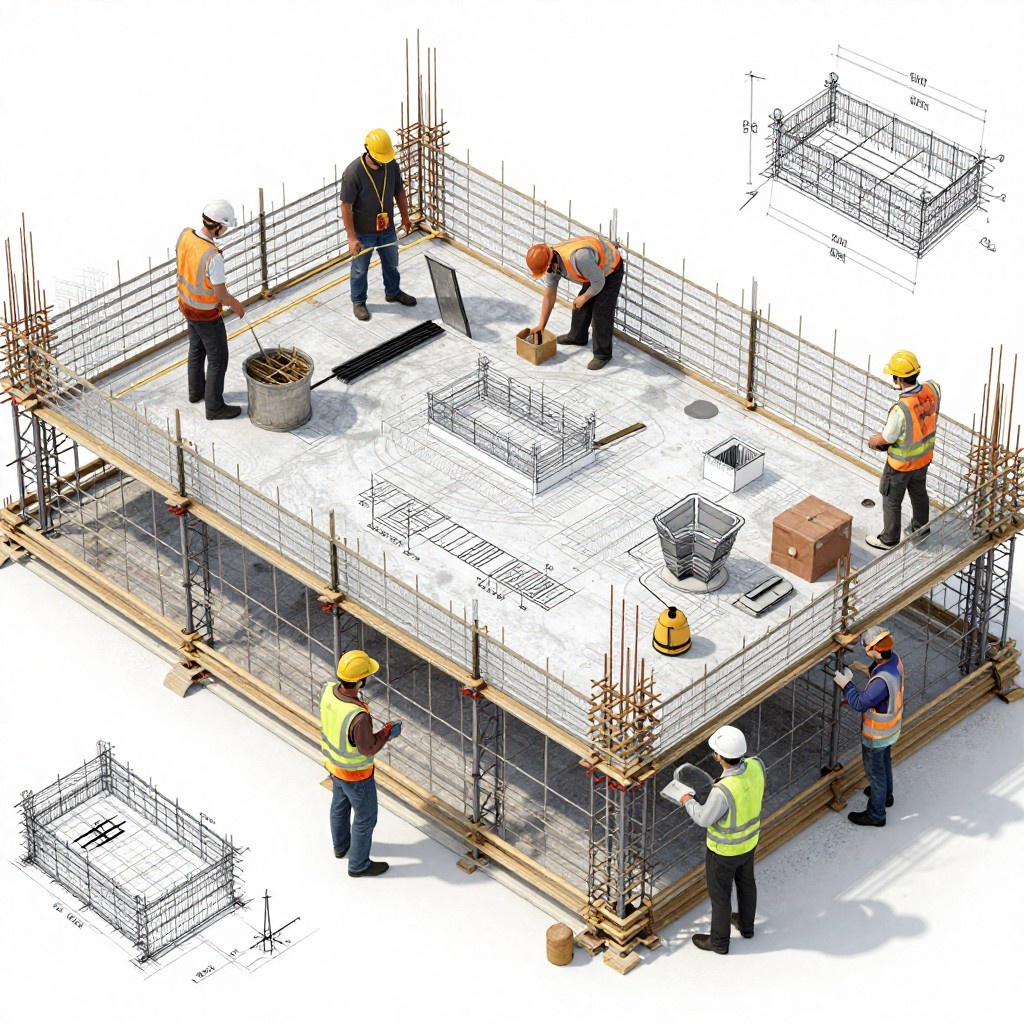What is BIM Software
BIM software is used in the construction industry to plan, schedule, design, and coordinate construction projects using a model. The program collects data and presents a realistic picture of infrastructure and structures before, during, and after construction.
To meet its objectives, BIM software must help construction business professionals accomplish the many tasks involved in constructing a structure. For instance, it has to facilitate teamwork and communication, provide tools for converting ideas into practical ones, and describe the costs of each project phase.
The concept of BIM has been in existence since the 1990s. It has 4D (time), 5D (cost), and 6D (as-built drawings) along with 3D (depth, height, and breadth).
Top 10 choices for BIM software
1. Autodesk Revit
How does it work?
Autodesk Revit is a powerful BIM production tool that can enhance project coordination and create better design and construction documents between MEP engineers and BIM architects.
Autodesk Revit can monitor and control changes that are made to the BIM model by different people. Other documents that can be created by the software are construction papers such as sections, elevations, and floor plans.
If the users wish to know more about the software, Autodesk offers free online training classes to help the users get started with Revit.
A community of BIM consultants, for example, the Balkan Architect, has many Autodesk Revit clients and produces a lot of Revit training materials.

Pros of Revit
- Seamless integration with other Autodesk solutions
- Lots of ready-to-use templates
- Great for project management
Cons of Revit
- Uses an annual subscription per user
- High-performance PC required
- Users must create their object libraries.
2. Navisworks
How does it work?
Navisworks is a project review and management software for teams and professionals in the AEC industry. It provides two products: Encourage and Facilitate. Navis Manage offers such features as advanced coordination, collision detection, 5D simulation analysis, and simulation tools.
Navisworks employs a tool known as 5D analysis and simulation to evaluate and justify project information. It is believed that the integration of the software with Autodesk BIM 360 Glue will improve the project team’s efficiency.
Navisworks has been the only coordination product in the Autodesk family for quite some time. The first and foremost use of Navisworks was to check for interference.
Among the most advanced import and model management tools, Navisworks provides the best tools to view and manage construction BIM models. It has, however, been around for a while, and Autodesk Construction Cloud which is more advanced and cloud-based is gradually replacing it.

Pros of Navisworks
- The interface is very simple and the learning curve is low
- You can use Microsoft Project or Primavera Contractor files directly to get super-accurate phasing!
- It handles a variety of file types
- If you are patient enough you can get more advanced animations such as traffic and construction equipment
- Rendering is built in
Cons of Navisworks
- Navigating in 3D isn’t impossible but I put it behind Sketchup, InfraWorks, Lumion and right in front of Civil 3D and Microstation.
- You have to be good with rendering engines to get good results (unlike software such as InfraWorks and Lumion)
- There are no ‘sketchy’ or other artistic rendering styles.
- There are no options for built-in sound.
3. Infurnia
How does it work?
Infurnia is a cloud-based design software that enables architects and interior designers to design 2D & 3D designs. It offers a variety of features, including It offers a variety of features, including:
- Customization: Infurnia also supports a high degree of customization and modularity such as the integration of custom 3D models and management of catalogs.
- Rendering: Infurnia can produce photo-realistic 4k renders in a short period.
- Collaboration: Infurnia has the capability of working together in real-time regardless of the location.
- VR: Infurnia provides a direct VR immersive experience.
- Working drawings: Infurnia can create working drawings on the spot.
- Manufacturing outputs: Infurnia can create manufacturing outputs.

Pros of Infurnia
- Free for individual architects, and affordable for teams
- Easy to learn with a modern interface
- Available across all platforms via a web browser
Cons of Infurnia
- Not as full-featured as software like Revit, especially for larger designs
- Requires persistent internet connection
4. Archicad
How does it work?
AutoCAD has libraries and features for each member of the project team with different specializations in the industry. Its libraries provide the users with over 750,000 intelligent objects and parts as the software solution.
AutoCAD saves time in designing since it has features that automatically generate bills and place doors among others. The developers of this software have provided several productivity types of research that show that the overall efficiency of the AutoCAD tool sets such as architecture, electrical, mechanical, MEP, Plant 3D, and raster design has been boosted by an average of 63%.
AutoCAD is offered at $275 per month.

Pros of Archicad
- Saves time
- Precision and accuracy
- Lots of file formats that can be opened on other software
- Great mobile responsiveness
Cons of Archicad
- Long learning curve
- Doesn’t integrate with MS Excel
- Expensive for small firms
5. Autodesk BIM 360
How does it work?
Autodesk BIM 360 is a cloud solution that enables project participants to cooperate and perform their activities in the course of the project. It's made up of several modules that focus on different aspects of the project, including It's made up of several modules that focus on different aspects of the project, including:
BIM 360 Layout: Assists with field layout through integration with a BIM 360 account to download and upload project models. It also helps the users to locate points on the job site with a lot of ease.
- BIM 360 Plan: It assists in production planning and project delivery since users can access and modify schedules remotely.
- BIM 360 Build: Supports field execution by linking project information and processes. It is used in quality and safety, to monitor progress and to coordinate work.
- BIM 360 Design Collaboration: Assists in the sharing and organization of Revit model work.
- BIM 360 Coordinate: Assists in model and clash scheduling.
- BIM 360 Ops: Supports in managing the assets of facilities.

Pros of Autodesk BIM 360
- Great for project management
- Live design updates between project teams
Cons of Autodesk BIM 360
- The interface isn’t user-friendly
- High learning curve
- Unstable CAD file collaboration
6. Tekla BIMsight
How does it work?
This too is mainly used for project collaboration that enhances design, construction, and maintenance processes .
Model fusion: Users can import models into a single project from different sources.
- Determine conflicts: Tekla BIMsight has the capability of identifying clashes between the model objects.
- Information sharing: Users can engage with other participants of the project and exchange building information through comments, markups, and project documentation.
- Manage edits: Users can accept comments and also control the changes that are made.
- Assign work: Users can assign tasks to others.
- Fix problems: It is possible to use Tekla BIMsight to identify and correct issues that may be encountered in the design phase of a project.

Pros of Tekla BIMsight
- Mobile platform supported
- Doesn’t require high-performing hardware
- Easily predicts costs
Cons of Tekla BIMsight
- Requires substantial training time
- Sectional views of the drawing can’t be printed.
- Not available on Windows
7. Trimble Connect
How does it work?
Trimble Connect drastically enhances the productivity of project teams by making it easier to collaborate and incorporate any design changes. It also significantly improves the quality of work that they deliver.
It has a single location for data storage and can be accessed and updated from any location by project teams.
Other features that enhance collaboration are also present in Trimble Connect, and these include the following.
However, certain differences can be made between Trimble Connect and other similar collaboration tools. Firstly, Trimble Connect has features relevant to construction projects such as the ability to create and manage punch lists since Trimble Connect was designed for the construction industry.
In conclusion, Trimble Connect has a robust security feature to ensure that the information shared in projects is secure.

Pros of Trimble Connect
- Free version available for a personal account
- Free trial available for a business account
Cons of Trimble Connect
- Requires a strong internet connection
- The interface is not user-friendly
- Doesn’t support 2D drawing
8. DataCAD
How does it work?
DataCAD is a Windows-based CAD program that enables architects, engineers, and construction specialists to draft, design, create 3D models, and prepare papers. This software enables the production drawing and model creation to be linked with SketchUp’s 3D modeling tool. Other features include associative dimensioning and photorealistic rendering.
Architects used to create 3D models and 2D drawings. It is only compatible with operating systems based on Microsoft Windows. By 1988, DataCAD had been adopted by more than 12,000 organizations in the United States and Canada.
DataCAD can be used to create real-world product 2D drawings and 3D models.

Pros of DataCAD
- Easy to learn
- Easy to use and intuitive
- Very fast 2D creation
Cons of DataCAD
- Supports only Microsoft Windows OS
- Minimal features
- 3D capabilities are not great
9. Plannerly
How does it work?
A web-based tool called Plannerly divides difficult BIM management jobs into three easy steps: 1) Overview, 2) Purpose, and 3) Check.
This is because Plannerly focuses on efficient BIM and information management, especially for design and construction projects. It is also arguably the simplest BIM tool out there!
Furthermore, Plannerly contains all the BIM document templates required for BEPs and EIRs, among others! It meets all the basic ISO 19650 needs without any configuration and integrates with Autodesk Revit, BIM 360/ACC, IFC files and other BIM software to enable data exchange across multiple platforms. Another free BIM program for college students is called Plannerly!

Pros of Plannerly
- Collaboration: Plannerly helps different parties collaborate digitally in a common environment.
- Export PDFs: Plannerly can export nicely formatted PDFs with integrated eSignatures.
- BIM Execution Plan (BEP): Plannerly offers a guide with practical tips and advice for optimizing the BIM process with a well-defined BEP.
Cons of Plannerly
- Learning curve: BIM has a learning curve.
- Software costs: BIM software can be expensive.
- Traditional design methods: For smaller projects or firms with limited resources, traditional design methods may be a more practical choice
10. ALLPLAN
How does it work?
Architects can use ALLPLAN, a system that includes the entire design process. It offers assistance with everything from the first draft presentation to the creation of working drawings, presentations of the complete layout, and the cost estimate for the building project.
The BIM solution for public agencies, property developers, and architectural firms. It includes every tool required for assessing, visualizing, modeling, and creating building documentation. The all-purpose BIM solution for any kind of architectural need is Allplan Architecture.
- Exceptional work in building modeling
- useful instruments for all stages of design
- Outstanding visualization skills
- Dependable quantity takeoff
- Cloud-based coordination and collaboration of models
- Interfaces for efficient data transfer

Pros of ALL PLAN
- Short learning curve
- Doesn’t require high-performance hardware
- Free trial
Cons of ALL PLAN
- Not compatible with Linux OS
- The interface is not user-friendly
- Detailed automatic drawings sometimes need to be supplemented manually
Future Trends in BIM Software
The future of BIM software is set to undergo a major revolution shortly based on technological development, shifts in the needs of the construction industry and the increasing focus on sustainability. Here are some key trends to watch: Here are some key trends to watch:
- The use of Artificial Intelligence and Machine Learning
Automation: AI can help in the design and documentation processes by reducing the amount of time spent on repetitive tasks.
Predictive Analytics: Machine learning can also be used to identify possible problems in the project, improve the design and facilitate decision-making.
- Enhanced Collaboration Tools
Cloud-Based Platforms: Increased use of cloud solutions to share information in real-time with the stakeholders regardless of their location.
Interoperability: Enhanced compatibility with other software applications such as geographic information systems, project management software etc.
- Virtual and Augmented Reality
Visualization: The use of VR and AR will enable the stakeholders to have a feel of the designs in a way that will enhance understanding and communication.
Design Reviews: Improved efficiency in design review processes and presentation to the clients.
- Sustainability Focus
Energy Modeling: Software that can be used in the design stage to carry out energy analysis and sustainability evaluations.
LifeCycle Analysis: Introducing attributes to assess the life-cycle environmental cost of materials and design decisions in construction projects.

- Integration with IoT
Smart Buildings: The use of BIM software will advance to incorporation of IoT devices for monitoring and managing real-time data.
Predictive Maintenance: Using IoT data to optimize the maintenance intervals and enhance the functionality of the buildings.
- Modular and Prefabrication Support
Design for Manufacturing: Better capacity to accommodate modular construction and prefabricated elements, which will increase productivity and decrease scrap.
- Data-Driven Decision Making
Big Data Analytics: Using big data to gain insights that can be applied to design and the way operations are conducted.
Performance Metrics: Measures to monitor performance indicators after occupancy for future projects.

- User-Centric Interfaces
Intuitive Design: Greater emphasis on the user interface and the design of the interface and dashboard to enhance usability for all the team members.
Training and Support: Enhanced user support and assistance to enable users to cope with the changes in the features and functions.
- Regulatory Compliance Automation
Code Checking Tools: Adoption of building codes and regulations into BIM processes to automate compliance verification.

- Decentralized Technologies
Blockchain: Use of blockchain in secure transactions and data management to enhance the credibility of the stakeholders.
Conclusion:
Choosing the most appropriate BIM software is critical in improving the delivery of services and construction projects in the AEC industry. First, it may be useful to classify projects according to their difficulty and scope to define the software that can meet certain needs. Communication tools are critical; preference should be given to cloud-based tools that make it easy to share documents with stakeholders in real time. Compatibility with other tools, including CAD and project management solutions, is essential for efficient collaboration.
First, intuitive design will help to minimize the time required to get acquainted with the software and increase efficiency; second, solid help and tutorial assistance will make the transition seamless. In this regard, it is important to review the organization’s cost structure based on the fees required in the initial stage to set up the service and the fees required in the subsequent stages of providing the service. Another consideration is scalability: choose applications that will be able to expand with your organization as the needs of projects change. Further, think about preparing for the future by selecting a solution that would support futuristic trends such as AI and IoT implementation.

However, before making a final decision, it is recommended to perform pilot tests with options selected to compare their efficiency in working with smaller projects. Make your team participate in the selection process to get their opinion on which of the options is more convenient and effective. Read about others' experiences in reviews and case studies and contact the vendors directly to get individualized demonstrations. Taking these points into consideration and following the recommendations given above, one will be in a better place to select the right BIM software to support collaboration and efficiency in the organization while preparing the organization for future competition in a new growing industry.




